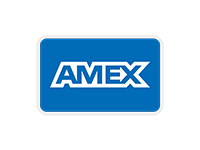By Craig Walker
ALCo’s Post-War Diesel Production
With World War II production restrictions having ended, the American Locomotive Company (ALCo) was aggressively working on new diesel locomotive designs. A new 4-axle freight locomotive was rolled out of the factory in January 1946. These full-width “carbody” locomotives utilized ALCo’s new 12-cylinder Model 244 diesel engine, which rode upon 4-wheel General Steel Casting Corporation (GSC) drop side equalizer, rigid bolster cast steel locomotive trucks (what would later be known unofficially, although incorrectly, as “AAR trucks”) and featured new body styling with a flat-faced nose that had rounded corners, a headlight with attractive grilles on either side and a stylish curved drip strip in the grilles on the carbody sides behind the cab. Rated at 1500 horsepower, these locomotives were offered as A-units (with a cab) and B-units (cabless booster units), with the A-units dubbed DL208 and the Bs known as DL209. The DL209s were designed with space for the steam generator for use in passenger service.
Once put into production, these engines would lose the curved drip strip, and the headlight would be raised a bit higher, and production would continue until mid-1950, and the various models would evolve from the DL208/DL209 through to the DL212A/DL213B. When in April 1952 ALCo adopted a model designation for their locomotives, replacing the more awkward specification numbers (such as DL208/DL209), these locomotives were retroactively dubbed FA-1/FB-1 – the model designation most commonly used today.

Missouri-Kansas-Texas PA-1 154-C shows the alternate-style anticlimber (also found on Erie/EL engines) as well as the original coupler cover on the pilot, which didn’t last long on most railroads.
Wait … Isn’t This About PAs?
We’re getting to that…
While FB-1s could be ordered with steam generators for use in passenger service, saw a need for higher horsepower passenger engines and the builder’s engineers designed a new 6-axle A-1-A diesel with a carbody similar to the first few FA-1/FB-1 locomotives, albeit longer. This new locomotive, initially known by just the serial numbers (10000 through 10006), were built in 1946 (with one, 10000, inexplicably built in 1949). Designed initially to be operated in A/B sets, these locomotives had a combined output of 4000 hp (with each locomotive within the set being rated at 2000 hp). These locomotives were sent over to the Lehigh Valley for testing between Pennsylvania Station (not that one, but rather the one in Newark NJ) and Buffalo NY.
ALCo’s engineering and sales teams believed that they had an advantage over EMD’s E-units. The Es, as with the PA predecessor DL-109, utilized two diesel prime movers, while ALCo’s engineers designed the PA was powered by a single diesel engine (prime mover), which should have been an advantage due to requiring fewer parts. The PA also used a superior GE electrical system, along with a larger steam generator, useful for all the passenger cars of the time equipped with steam-ejector air conditioner. (Steam was used for more than just heat in the passenger cars.)
Successful testing led to the production of these locomotives, initially known as DL304 (A-units) and DL305 (B-units), from 1946 until 1953. (Any of these built after April 1952, when ALCo began using model designations, were known as PA-1s and PB-1s, with this moniker assigned retroactively to the rest of the production fleet as well.)
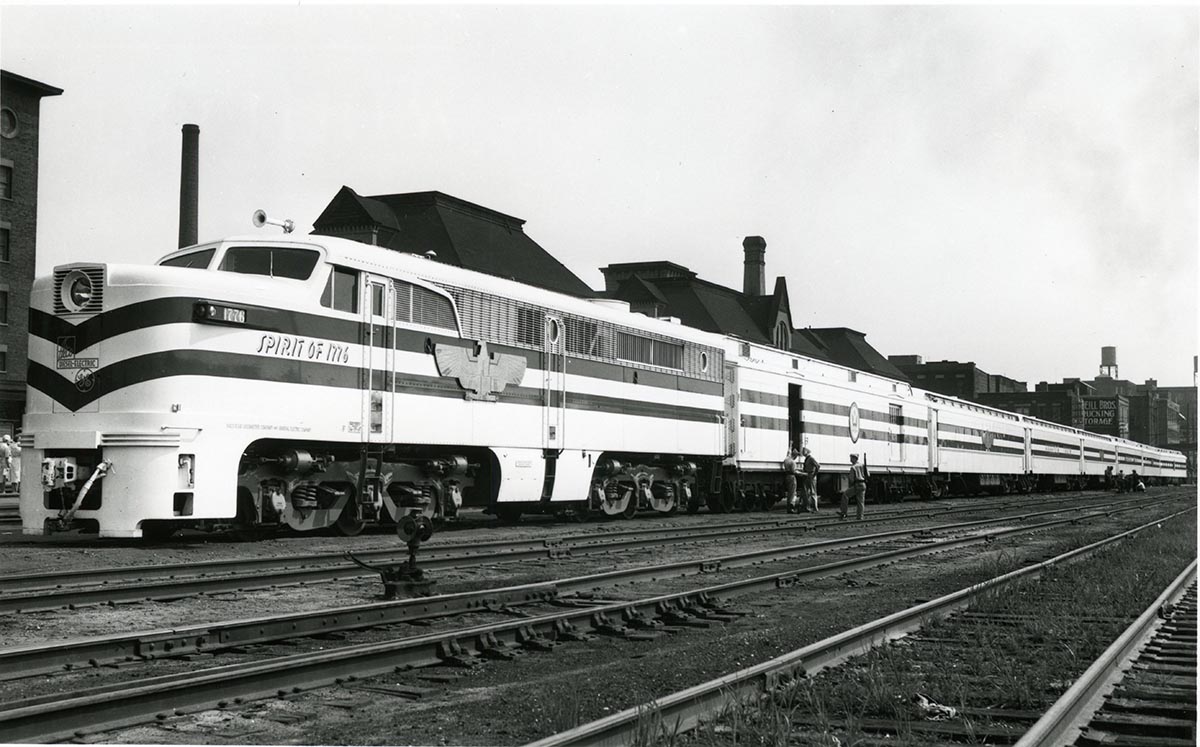
The original Freedom Train, which toured the country in 1947 and 1948, was pulled by PA-1 1776. This train was painted white with pewter gray trucks, with a blue band above a red band running the length of the seven-car train, which carried historical artifacts such as the Declaration of Independence, a draft of the Constitution, the Bill of Rights and other memorabilia around the United States.
With their longer, sleeker look (than found on the FAs, although both were designed by GE’s Ray Patten), the PAs were often called “The Most Beautiful Diesel Locomotive Ever Built.” This is subjective, of course, but most agree that the PAs were attractive machines. (For example, when I was a kid, I wasn’t a fan of the PA, and was disappointed to see them on Santa Fe’s “San Diegans” instead of an EMD F-Unit. But with time – nay, maturity? – I grew to admire their styling, and to also appreciate the idea that kids have no taste!)
A number of railroads purchased the PA-1s (Cotton Belt, Rio Grande, Erie [and becoming Erie Lackawanna as a result of the merger], Gulf Mobile & Ohio, Lehigh Valley, Missouri-Kansas-Texas, Missouri Pacific, New Haven, Nickel Plate Road, New York Central [including P&LE], Pennsylvania, Santa Fe, Southern Pacific [including T&NO], Union Pacific and Wabash). Plus, one was purchased for use on the original Freedom Train, wearing a striking Chester Mack-designed red, white and blue paint scheme. (ALCo’s designer Chester Mack also adapted the Santa Fe’s famous Warbonnet scheme to fit the PAs as well.). There were also Demonstrators in various paint schemes, from a black and silver scheme to Canadian National’s green and gold scheme (in the hopes that the Canadian market would purchase this model, but they passed on the PA and these Demonstrators were sold to the MKT). PB-1 diesels were sold to Rio Grande, New York Central, Pennsylvania, Santa Fe, Southern Pacific and Union Pacific.
In 1950 ALCo upgraded their 12-cylinder freight engines from 1,500 hp to 1,600 hp, and soon upgrade their 16-cylinder passenger engines from 2,000 hp to 2,250 hp. And PA production continued, although a new model was established for these higher horsepower diesels – The PA-2/PB-2. (Did any of you not see that model designation coming?) Besides the higher horsepower, and some other internal changes, externally the PA-2/PB-2 was nearly identical to the earlier PA-1/PB-1 – with the exception of the grilles, which were changed to those produced by Farr. This resulted in the elimination of the stylish curved drip strip, a distinguishing feature on the PA-1/PB-1 locomotives.
PA-2s were purchased by Erie (with these going to Erie Lackawanna), Missouri-Kansas-Texas, Missouri Pacific, MP subsidiary International-Great Northern, New York Central [including P&LE], Southern Railway [as NO&NE] and Southern Pacific. PB-2 diesels were sold to Missouri Pacific, New York Central and Southern Pacific. An A-B set of these higher horsepower engines were also built as demonstrators, which following the demonstration tour were sold to the NYC.
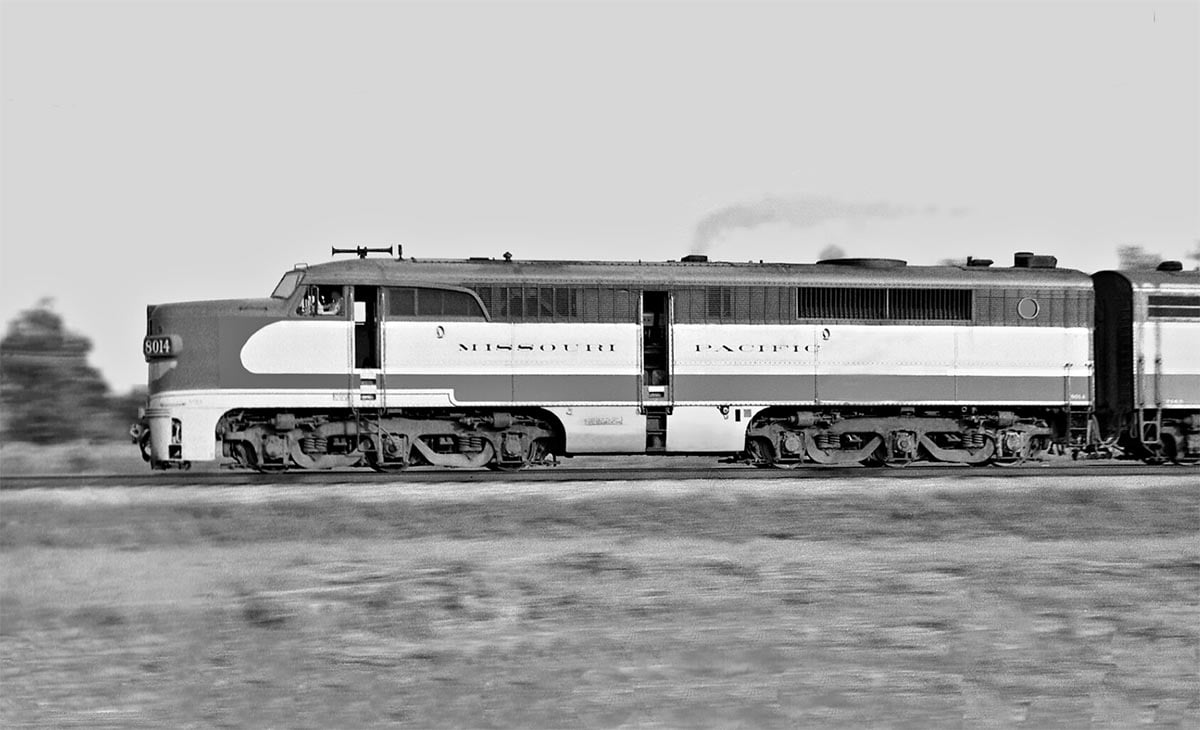
Missouri Pacific PA-2 8014 looks sharp in this pan shot of it speeding through Newport, Arkansas. These engines’ attractive lines are perhaps best appreciated from this angle. J. Parker Lamb photograph, Gregory J. Sommers collection
But wait, there’s more!
Major changes to made to the PAs in 1952. At that time, ALCo’s engineering staff upgraded them with a water-cooled turbocharger, an improved fuel injection system and exhaust manifold (in an effort to reduce ALCo’s “trademark” belching smoke), a hardened crankshaft and an upgraded traction generator. These were all internal changes, and externally nothing changed. As a result of these upgrades, some have erroneously called these engines “PA-3s,” but the correct term is PA-2 phase II. And as we at Rapido like to be correct, we will use that model designation in the roster included later in this Master Class. (A PA-3 version was proposed, but plans for it were scrapped due to declining sales of conventional passenger diesels in favor of hood diesels with steam generators, such as EMD’s SDP40 and SDP45, and GE’s U28CG and U30CG, along with a general decline in the passenger locomotive market tied to a greater number of passenger trains being eliminated. Want to see Rapido Trains produce these EMD or GE passenger diesel models? Click here to request them: https://form.jotform.com/210555532174249. Then you, too, can kill off more streamlined diesels on your layout: Although, technically, they didn’t, as E-units and even four PAs survived well into that era.)
Sadly, the PA era didn’t last as long as many would have liked, as many railroads had removed them from service by the early 1960s, with some remaining in service until the late Sixties. This was due to declining passenger patronage (the Lehigh Valley, for example, ceased passenger operations in 1961), and partly due to the fact that these ALCo products generally fared worse in service by comparison to EMD’s. The prime mover failed more often than EMD’s did, and in the mid-Fifties new passenger car air conditioners were electromechanical units that no longer required steam to operate. And the biggest strike against the ALCos was that they were much less economical to operate than the EMD diesels were.
A few railroads regeared them and reassigned them into freight service, but that didn’t last for long either.
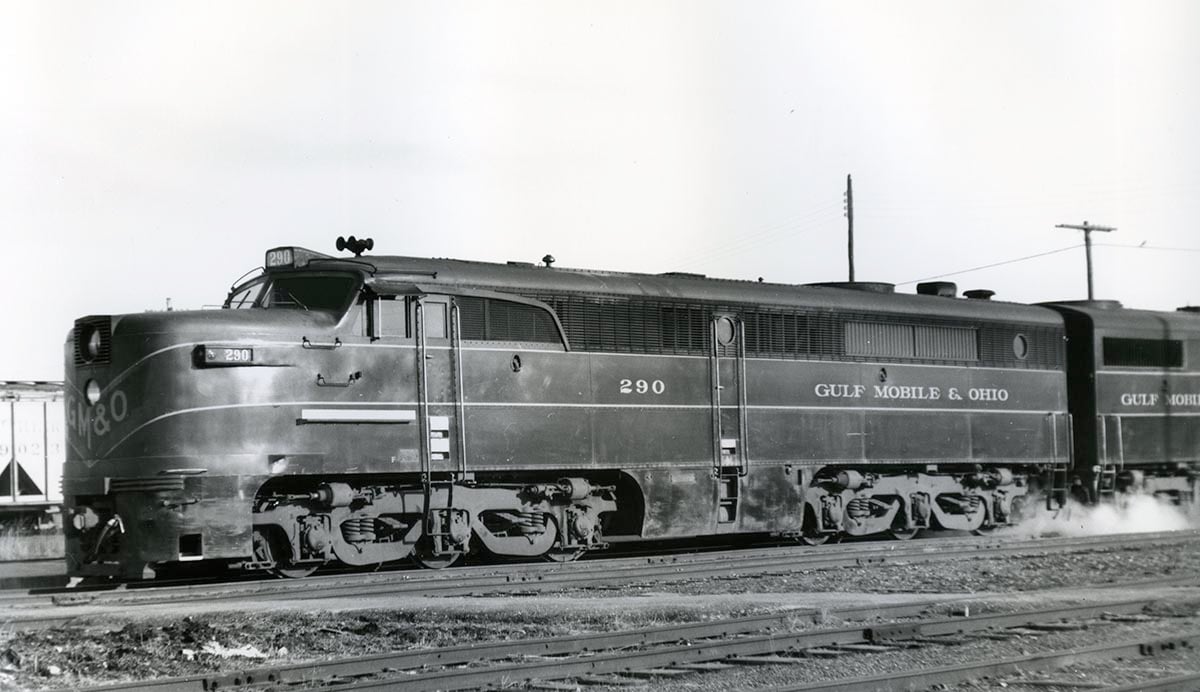
Both of the PA-1s purchased new by the Gulf Mobile & Ohio, 290 and 291, included a rooftop numberboard similar to those applied to Santa Fe’s PA-1s, but wider due to GM&O’s three-digit roadnumbers. As seen on GM&O 290 in this December 1950 photo, the GM&O also applied grabirons and a long walkway to the side of the nose. Louis A. Marre photograph, Gregory J. Sommers collection
Two “Fairy Godfathers” to the Rescue!
By the 1960s, ALCo’s fortunes were dicey and railroads were operating fewer and fewer passenger trains. This combination did not bode well for the PA, and they were being retired in greater numbers by this time. By 1967, one would be hard pressed for even find any PAs in deadlines, let alone in service. But a savior of sorts was on the horizon when the new president of New York’s Delaware & Hudson, F. C. “Buck” Dumaine Jr, felt that the railroad’s passenger hood units, steam generator equipped RS2s, didn’t provide the look he wanted to go with his just acquired ex-Rio Grande passenger cars, and that perhaps streamlined diesels might help the trains look better (they would!) and perhaps increase patronage. At this time, Santa Fe was retiring their fleet of twenty-nine PA-1s and seventeen PB-1s, and a deal was struck for the D&H to purchase four of Santa Fe’s better running PA-1s. Soon, AT&SF 59L, 60L, 62L and 66L were heading to upstate New York for refurbishment (along with New Haven PA-1 0783, already in the area just east of New York, which would be used as a parts source). These engines would emerge in “Blue Warbonnet” paint after rebuilding, when D&H shops forces repainted the Santa Fe’s red with D&H blue, leaving the stainless-steel side panels unpainted. Their new numbers were D&H 16, 17, 18 and 19. As might be expected in the railfan community, this was exciting news! And these four units were found on the point of the D&H’s Albany NY to Montréal QC Laurentian and Montréal Limited on a daily basis for a short time.
Then things got complicated by the Penn Central merger, resulting in the D&H turning their operations over to Erie Lackawanna in 1970, and EL E8As were assigned to the D&H’s trains, with two PAs (16 and 18) heading to New Jersey to operate in local commuter service (luckily for the Garden State’s railfans!). The next year, with the implementation of Amtrak on May 1, 1971, all D&H passenger service was annulled (as it was on so many other railroads). Then, the final four PAs future was bleak: Two (17 and 19) were sold to GE, two (16 and 18) remained on the D&H for occasional business trains, and then within a year leased to private excursion company Steam Tours Inc. and operated in the Virginias until Steam Tours encountered difficulties. And then, a second second chance … (Yes, math was never my strong suit.)
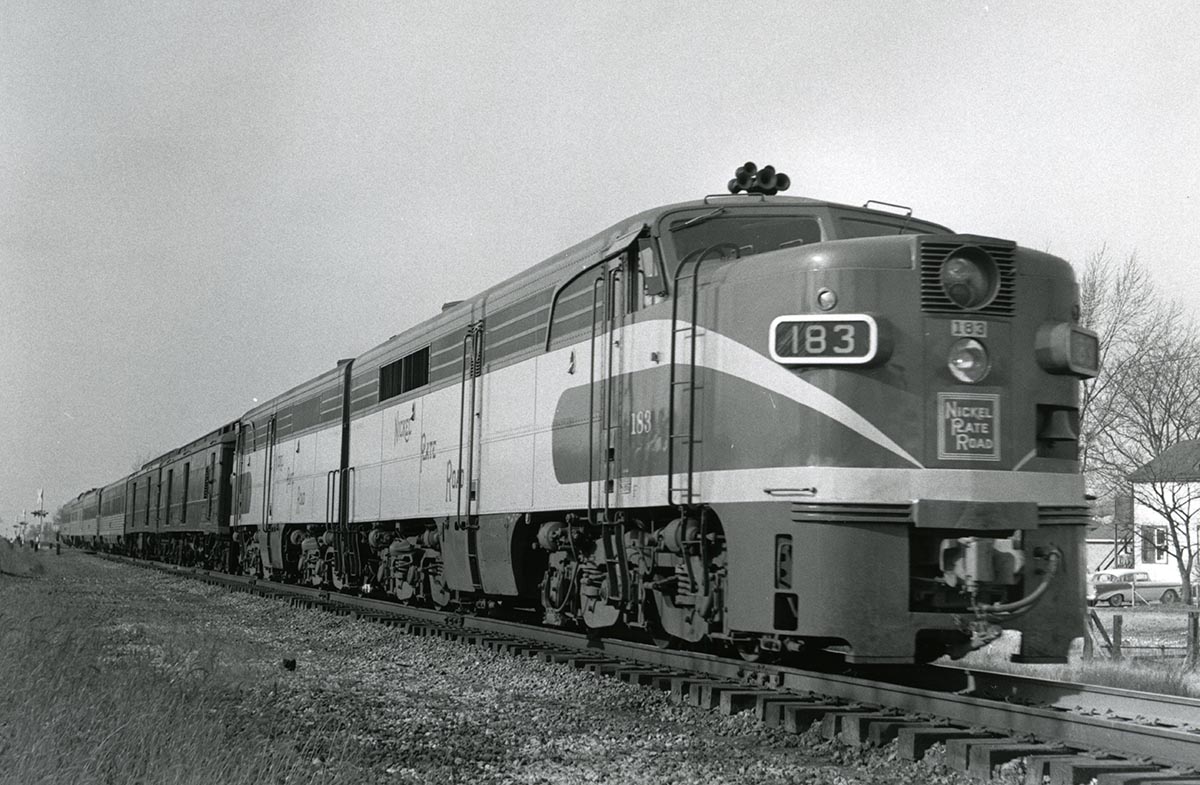
The New York, Chicago & St. Louis Railroad, more commonly called the Nickel Plate Road, modified their fleet of eleven PA-1s with fabricated ladders on the right side of the nose, and a recess for the bell on the left side, as seen on PA-1 183 leading train 8, the New Yorker (Chicago IL to Buffalo NY on the NKP, and then Buffalo to New York NY on the Delaware Lackawanna & Western). Gregory J. Sommers collection
In 1972, when the Erie Lackawanna filed for bankruptcy (all the rage with railroads in the northeaster US at the time), the Delaware & Hudson was reorganized. And the new president (yes, another one), C. B. Sterzing, who was also a fan of the stylish passenger power that the D&H had operated for an all-too brief time, acquired PAs 17 and 19 to complete the set. By this time, though, the D&H PAs were in sad shape and were experiencing a number of mechanical issues. But the dark clouds parted yet again in August 1974, when the state of New York agreed to help fund the restoration of D&H’s Albany to Montréal passenger service, including upgrading the last remaining PA-1 diesels! All four were cycled through the Morrison-Knudsen facility in Boise ID and emerged as state-of-the-art diesels, having received ALCo 12-cylider 251 diesel engines and modernized electrical and power systems. Now rated at 2,400 hp, these engines were christened as PA-4, since ALCo had planned on using PA-3 but never did. The first PA-4 released from M-K, D&H 19, left Boise on February 14, 1975, and as it worked its way east, it even led an Amtrak passenger train for part of the journey. In tribute to D&H’s Chief Road Foreman, the name “M. A. Davis” was applied to the cab. The other three followed later in 1975.
In March 1977 they were bumped from service again by Amtrak’s new Rohr Turboliners, which could operate all the way into New York City’s Grand Central Terminal without an engine change. (As Rapido Trains also produces the Rohr Turboliners, modelers can replicate this easily on their layout by operating D&H PAs one day, and Rohr Turboliners in the next day’s operating session. Rapido has you covered!) After a failed stint in freight service, the four were shipped further east in October 1977 to join the fleet of Massachusetts Bay Transit Authority engines hauling commuters in and out of Boston. The lease to MBTA ended when their own refurbished GPs returned to service.
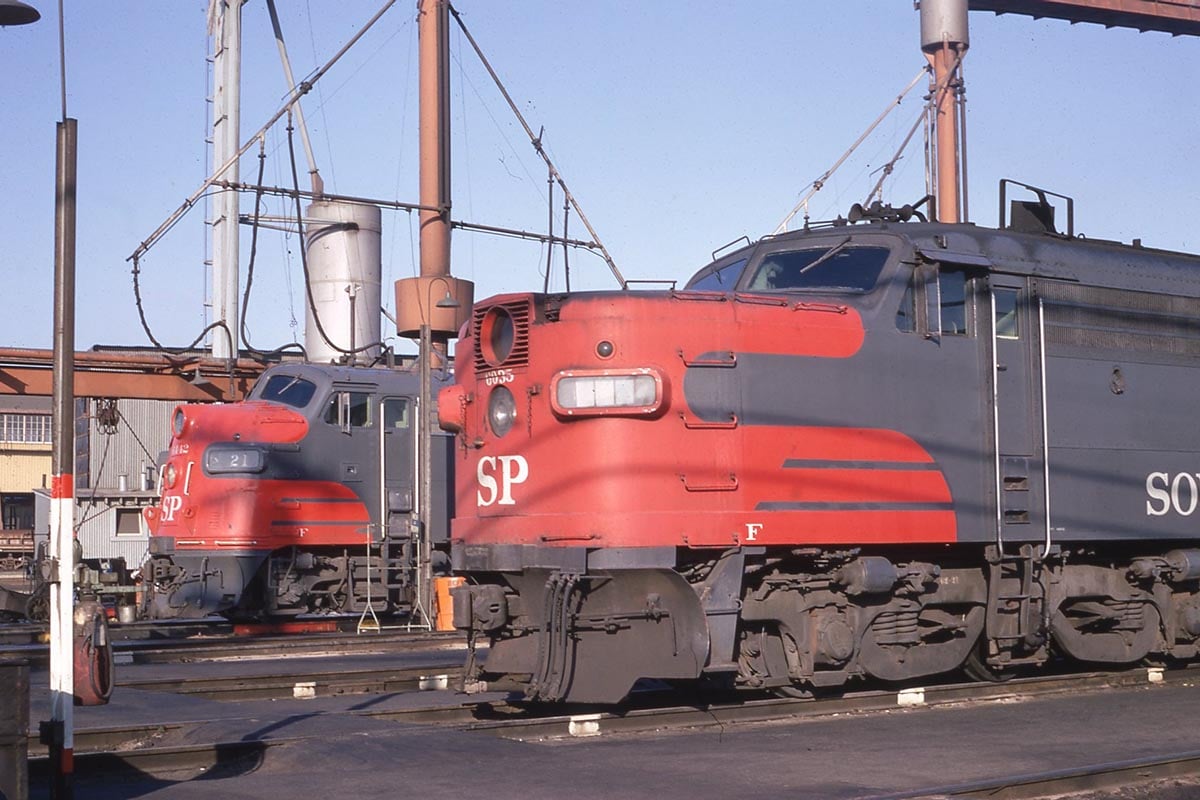
The contrast between EMD’s “bulldog” nose and ALCO’s squared nose is seen in this view, showing SP FP7 6441, recently arrived on train 21 (Ogden UT to Oakland CA mail train) next to SP PA-2 phase II 6035 in Oakland’s engine facility. Gregory J. Sommers collection
¡Bienvenidos Amigos!
Delaware & Hudson PA-4s 16-19 were leased to México’s Ferrocarriles Nationales de México (NDM), and shipped “as is” in late 1978 southward to a country that had never purchased any PAs. These final four PAs initially operated on the FNM in Delaware & Hudson’s “blue warbonnet” scheme, but eventually they were renumbered with the same road numbers following rebuilding around 1989. A “DH-” was added ahead of the numbers, thus numbered DH-16 through DH-19. This coincided with the engines being repainted – first in a two-tone blue scheme with orange striping (and losing their stainless-steel side panels in the process) and wearing the railroad’s new FNM logo. DH-17 later received SP Daylight colors – red and orange with silver striping, and also the FNM logo. The engines’ age, combined with hard use on various passenger trains, caused these locomotives to fail several times, and eventually they were retired. Two, 17 and 19, are on display at museums. The other two, 16 and 18, were eventually returned to the US for restoration.
¡Adios Amigos! Two Survivors Return to the US
Two of the former D&H engines were returned to the United States in 2000 with hopes of restoration. D&H 16 (ex-ATSF 59L) is at the Museum of the American Railroad in Frisco, Texas, undergoing restoration, and the project is moving along. The other, the former D&H 18 (originally Santa Fe 62L) was obtained by Doyle McCormack (of American Freedom Train-fame) and moved to the Oregon Rail Heritage Center in Portland, Oregon (https://orhf.org/). Doyle has cosmetically restored the engine, but as a Nickel Plate Road PA because of his affinity for that railroad. Work continues on this locomotive to get it operational, but until that time, it is a thrill to see an actual ALCo PA-1 locomotive still in existence seventy-plus years after it was constructed at ALCo’s factory in Schenectady, New York! (Doyle McCormack and the Oregon Rail Heritage Center were kind enough to let us invade their museum for a day to laser measure their PA, and we encourage you to visit or donate to them, as they do a terrific job with their collection.)
And we look forward to seeing the restoration of Santa Fe 59L at the Museum of the American Locomotive as well, and from photos we’ve seen, they are doing an amazing job! Click here for their website, and please consider donating to them to get help them get their PA-1 restoration completed even sooner: https://www.historictrains.org/. (They also own a former Baltimore & Ohio Slumbercoach – yet another Rapido project.)
It should be noted that one additional PA exists as well, as a Paulista PA-2 has been undergoing a long-time restoration in Brazil.
ALCo PA & PB Phases
For the most part, PA-1/PB-1 locomotives were all pretty much identical, other than factory options such as equipping engines with dynamic brakes … or not … as well as headlight options (a single headlight or a headlight and a signal light) and side-mounted or corner mounted numberboards on the nose. These variations will be included in the roster below. Road-specific details include roof-mounted numberboards on Santa Fe units, as well as illuminated side-panels that displayed the engine number on both Santa Fe and Rio Grande engines.
PA-2/PB-2 locomotives also had phases, depending upon when they were constructed. PA-2 diesels did not have the curved drip strip in the grille behind the cab, and both PA-2 and PB-2 units had Farr grilles.
Many PAs were equipped with a cover on their front pilot that could be closed over the front coupler, to provide a sleeker appearance. These seem to have been removed fairly early in their careers, as they were likely too much trouble to operate, and may have also been subject to damage.

This view of Erie Lackawanna PA-1 858, seen in Marion, Ohio, on March 15, 1969, illustrates the MU receptical on top of the nose, as well as the alternate-style anticlimber above the pilot and the vent added under the numberboards. Louis A. Marre photograph, Gregory J. Sommers collection
Roster
Want to get even more nerdy? Click here to see our complete, unit-by-unit history!
| Original Owners: Railroad | Model | Quantity | Notes |
|---|---|---|---|
| ALCo-GE Demonstrator | PA-1 | 1 | to ATSF |
| ALCo-GE Demonstrator | PB-1 | 1 | to ATSF |
| American Freedom Train | PA-1 | 1 | to GM&O |
| Atchison Topeka & Santa Fe | PA-1 | 28 | |
| Atchison Topeka & Santa Fe | PB-1 | 16 | |
| Denver & Rio Grande Western | PA-1 | 4 | |
| Denver & Rio Grande Western | PB-1 | 2 | |
| Erie | PA-1 | 12 | to Erie Lackawanna |
| Erie | PA-2 | 2 | to Erie Lackawanna |
| General Electric | PA-2 | 1 | to NYC |
| General Electric | PB-2 | 1 | to NYC |
| Gulf Mobile & Ohio | PA-1 | 3 | |
| International-Great Northern (MP) | PA-2 | 2 | to MP |
| Lehigh Valley | PA-1 | 14 | |
| Missouri-Kansas-Texas | PA-1 | 6 | |
| Missouri-Kansas-Texas | PA-2 | 8 | |
| Montréal Locomotive Works | PA-1 | 2 | to MKT |
| Missouri Pacific | PA-1 | 8 | |
| Missouri Pacific | PA-2 | 10 | |
| Missouri Pacific | PB-2 ph II | 16 | |
| Southern Railway (New Orleans & North Eastern) | PA-2 ph II | 6 | |
| New York, New Haven & Hartford | PA-1 | 27 | |
| Nickel Plate Road | PA-1 | 11 | |
| New York Central | PA-1 | 4 | |
| New York Central | PB-1 | 2 | |
| New York Central | PA-2 | 5 | |
| New York Central | PB-2 | 2 | |
| Paulista (Ferrovia Paulista S.A. - Brazil) | PA-2 | 3 | to Fepasa |
| Pittsburgh & Lake Erie (NYC) | PA-1 | 4 | |
| Pittsburgh & Lake Erie (NYC) | PA-2 ph II | 2 | |
| Pennsylvania Railroad | PA-1 | 10 | |
| Pennsylvania Railroad | PB-1 | 5 | |
| St. Louis Southwestern (Cotton Belt) | PA-1 | 2 | |
| Southern Pacific | PA-1 | 12 | |
| Southern Pacific | PB-1 | 6 | |
| Southern Pacific | PA-2 | 4 | |
| Southern Pacific | PB-2 | 2 | |
| Southern Pacific | PA-2 ph II | 23 | |
| Southern Pacific | PB-2 ph II | 5 | |
| Texas & New Orleans (SP) | PA-1 | 12 | |
| Union Pacific | PA-1 | 8 | |
| Union Pacific | PB-1 | 6 | |
| Wabash | PA-1 | 4 |
| Subsequent Owners: Railroad | Model | Quantity | Notes |
|---|---|---|---|
| Atchison Topeka & Santa Fe | PA-1 | 1 | ex-ALCo-GE Demonstrator |
| Atchison Topeka & Santa Fe | PB-1 | 1 | ex-ALCo-GE Demonstrator |
| Delaware & Hudson | PA-1* | 4 | ex-AT&SF |
| Erie Lackawanna | PA-1 | 12 | ex-Erie |
| Erie Lackawanna | PA-2 | 2 | ex-Erie |
| Fepasa (Ferrovia Paulista S.A. - Brazil) | PA-2 | 3 | ex-Paulista |
| Ferrocarriles Nacionales de México | PA-4* | 4 | ex-D&H, ex-AT&SF |
| Gulf Mobile & Ohio | PA-1 | 1 | ex-AFT |
| Missouri Pacific | PA-2 | 2 | ex-I-GN |
| New York Central | PA-2 | 1 | ex-General Electric |
| New York Central | PB-2 | 1 | ex-General Electric |
| Missouri-Kansas-Texas | PA-1 | 2 | ex-MLW Demonstrator |
* - Rebuilt by Morrison-Knudson to PA-4 locomotives
Variations and Oddities
- Many railroads decorated their PAs and PBs in multiple paint schemes through their service lives, such as DRGW (3), GMO, MKT, MP, NDM, NH (at least four schemes), NYC/PLE, PRR and SP/SSW (2 plus experimental variations) and WAB.
- Small changes were made to these engines over the years, from adding multiple unit (MU) receptacles to the noses (either in recesses or mounted to the front), to a wide variety of air horns, additional grabirons (on the noses or on the cabs) and radio antennas. Check photos for details on these.
- ALCo-built PA-1s 9077 and 9078 were painted in Canadian National colors and wore Montréal Locomotive Works and General Electric logos on their noses. They operated as Demonstrators on the CN from February through May in 1950. It was all for naught, as no Canadian railways placed orders for them, and thus no PAs were built at ALCo’s Canadian division MLW.
- Santa Fe PA-1 53L was briefly painted in a “Gold Warbonnet” scheme, with gold replacing the red and blue replacing the yellow and black stripes, for a General Electric event in Los Angeles in February 1960.
- Santa Fe PA-1 51L, PB-1 51A and 51C (ex-63L, née-51B) were rebuilt in February 1955 with EMD prime movers, resulting in the roofline being raised a foot or two in the center of the locomotives to accommodate the change. The grilles on the sides of these diesels were also modified, with recessed area removed. These three were generally assigned to the “San Diegans” after that. ATSF repowered PA-1 51C and repowered PB-1 51A (ex-EMDX 51A) were wrecked, and ultimately scrapped, in an accident in Anaheim, CA, on December 22, 1965. The remaining rebuilt PA-1, ATSF 51L, was modified with MU receptacles in its nose in 1966, and retired a few years later.
- Santa Fe and Rio Grande PA-1s had large illuminated numberboards installed in a side panel behind the cab when built. Rio Grande’s were longer than the Santa Fe’s due to their use of four-digit roadnumbers (as opposed to Santa Fe’s two-digit numbers). These carried over to the D&H and NDM as well.
- Santa Fe also ordered their PA-1s with a small illuminated numberboard centered above the cab. These carried over to the D&H and NDM as well.
- Erie PAs had an MU receptacle installed on top of their noses, centered over the headlight. These remained on the engines following the Erie Lackawanna merger. Erie/Erie Lackawanna also added vents below the numberboards.
- Erie and MKT owned PA-1s with an alternate anticlimber above the pilot, which featured ribs on either side of the center buffer.
- Three of the Erie Lackawanna PAs had “snow lifters” – and angled piece of sheet metal – installed in front of their air horns, in order to attempt to keep snow from accumulating in the horn’s trumpets.
- The two PA-1s that Gulf Mobile & Ohio purchased new featured rooftop numberboards similar to those on the Santa Fe PA-1s, but wider to accommodate the GM&O’s three-digit roadnumbers.
- Nickel Plate Road cut a recess into the lower left corner of their noses to relocate the bell, and also added a fabricated ladder to their PAs right side of the noses.
- Pennsylvania Railroad replaced the as-delivered side-mount numberboards with their own corner-mount numberboards, which were free-standing (that is, not welded to the nose as the factory installed corner-mount numberboards were).
- Pennsylvania Railroad also installed Trainphone antennas on the roofs of their PA-1s at some point, which extended the length of the engine. They also installed vents on the front of the noses.
- Southern Pacific PA-2s were fitted with snowplows in place of the standard ALCo pilot, as well as raised exhaust stacks and walkways over the large fan housing.
- Southern Pacific also installed icicle breakers on many of their engines’ roofs.
- Union Pacific installed a cast steel pilot on 605, one of their 8 PA-1s, possibly as the result of an accident that damaged the original pilot.
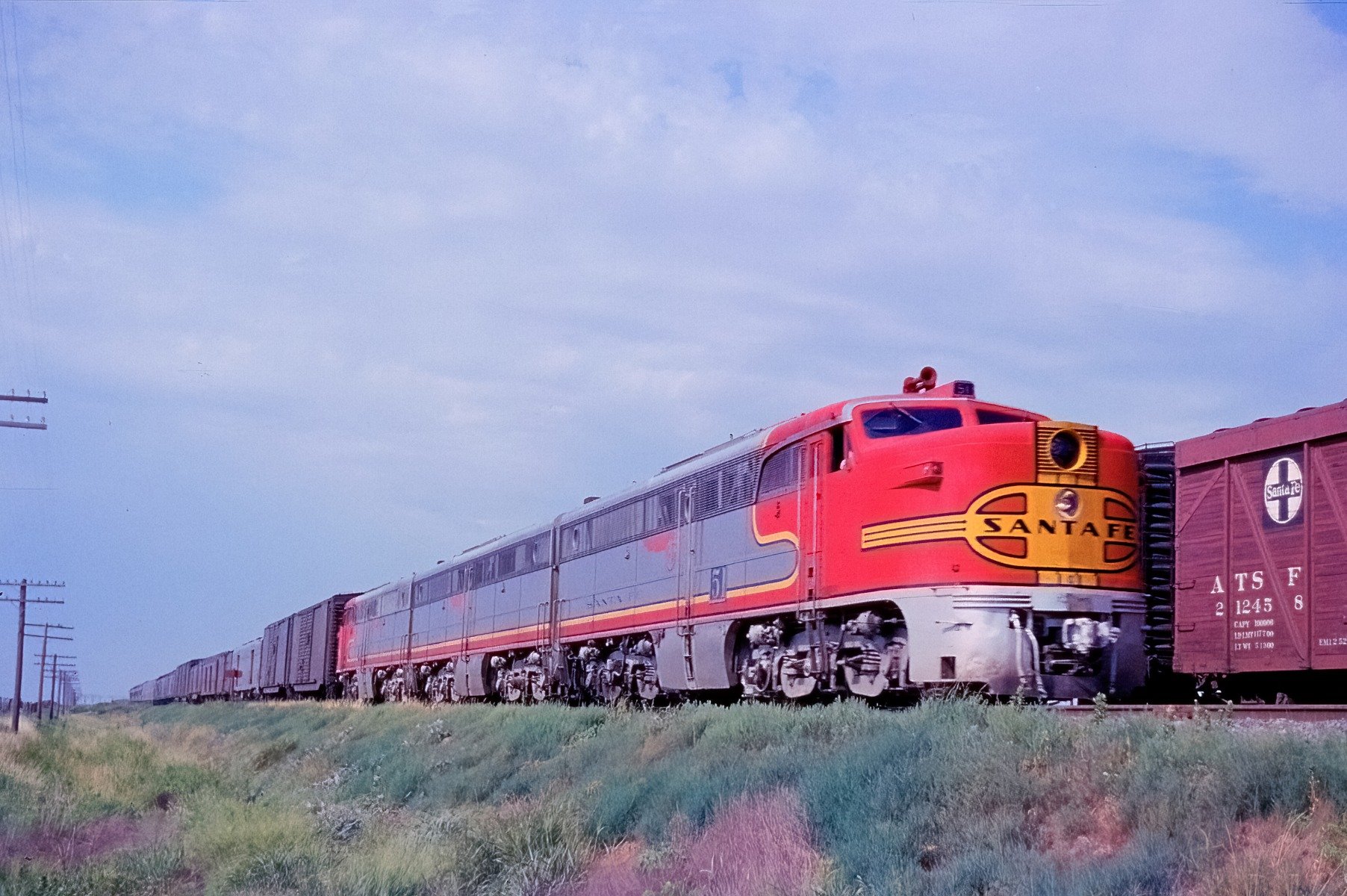
The Atchison Topeka & Santa Fe Railway's three repowered PAs - ATSF 51L, 51A and 51C - pull train 4, the eastbound Mail Train, passing through Kiowa, Kansas, on July 16, 1955. (Clayton C. Tinkham photograph, Robert Tinkham collection)
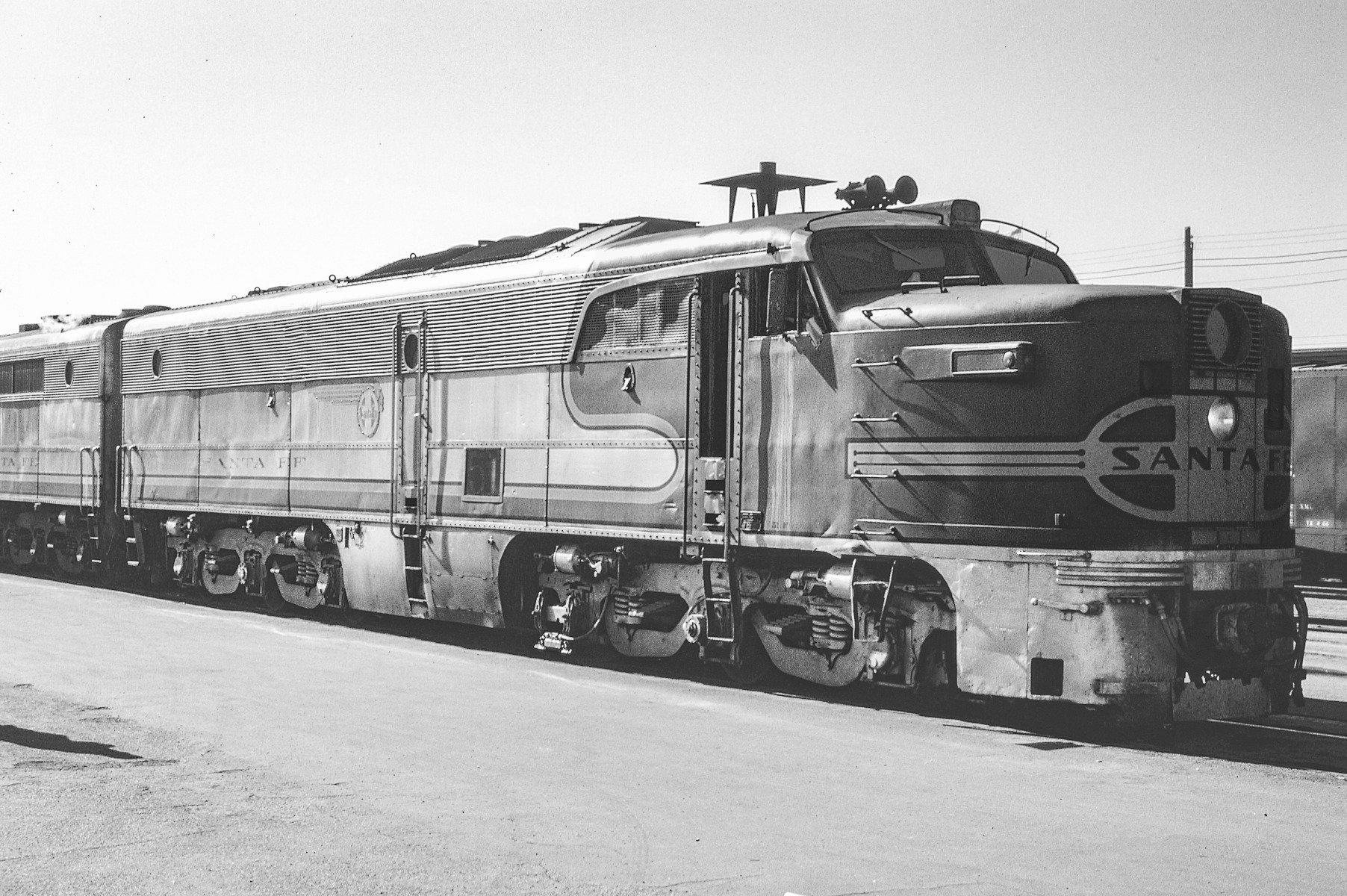
Atchison Topeka & Santa Fe Railway EMD- repowered PA-1 51L, but this time the last of the three repowered PA/PBs on the system, leads train 75, a Los Angeles-bound San Diegan, waiting to depart San Diego on January 15, 1967. By this date, 51L has had MU receptacles placed in recesses in its nose. (Clayton C. Tinkham photograph, Robert Tinkham collection)
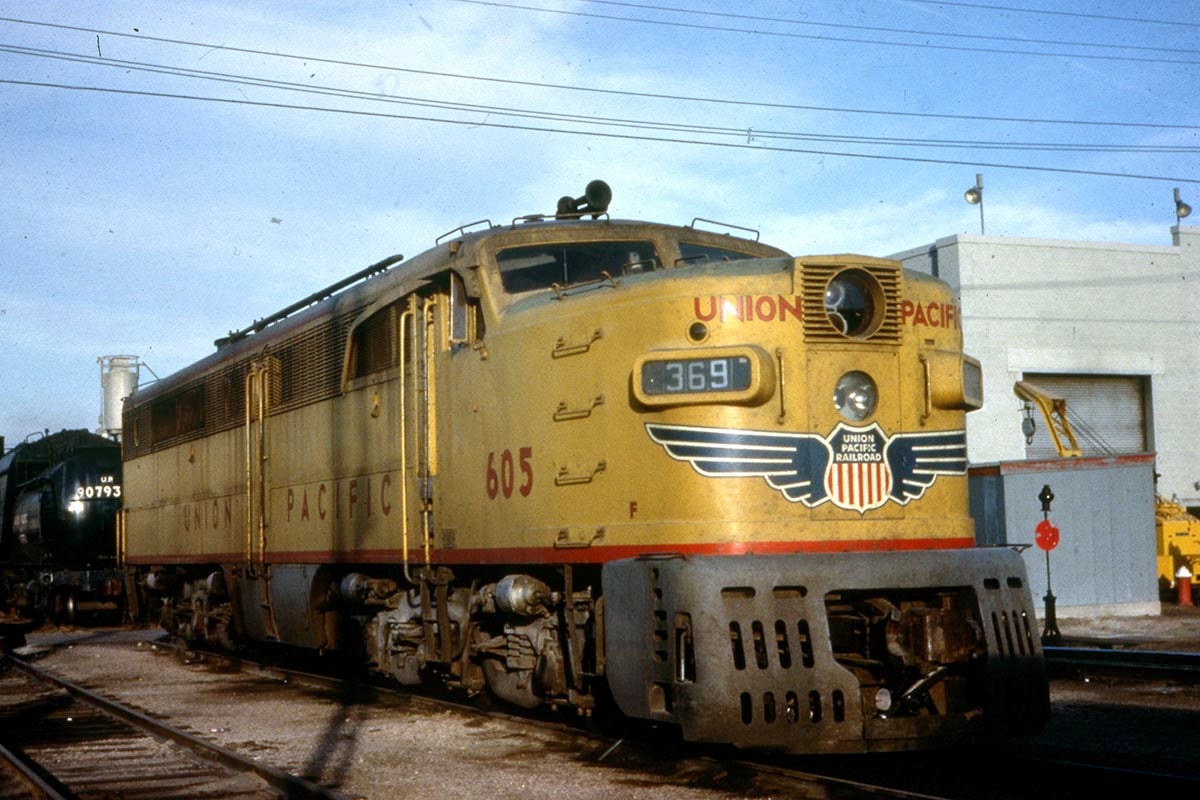
One of Union Pacific’s eight PA-1s, engine 605, had a large cast steel pilot installed by the railroad’s Omaha Shops in 1958, likely the result of a grade crossing accident. Gregory J. Sommers collection
Where Are They Now?
Of the 294 ALCo PAs and PBs built (169 PA-1s, 37 PB-1s, 29 PA-2s, 5 PB-2s, 49 PA-2 Phase IIs and 5 PB-2 Phase IIs), just 6 remain.
Reportedly, one of the Fepasa PA-2 locomotives are on display in Brazil.
The four PA-1 that were rebuilt into PA-4s by M-K for the D&H ended up in México, and of those:
- FNM 16, which was heavily damaged in a derailment, is at the Museum of the American Railroad in Frisco, Texas, and is slated to be restored to Santa Fe appearance.
- FNM 17 is at the National Museum of Mexican Railroads in the city of Puebla, in the state of Puebla, México, and is inoperable.
- FNM 18 is owned by Doyle McCormack and was restored as Nickel Plate Road 190. It is on display at the _ in Portland, Oregon.
- FNM 19 is at the National Museum of Mexican Railroads in the city of Puebla, in the state of Puebla, México, and is reportedly still in operating condition.
Additionally, one PB-1 still exists, albeit in a heavily modified condition.Denver & Rio Grande Western 6002 was converted to a steam-generator car in 1965 (in 1980 it lost its ALCo trucks in favor of EMD Blomberg B trucks), and was in use on the Rio Grande Zephyr, until it was discontinued in favor of Amtrak service, and then on the Ski Train. In 2007 it was sold to Canada’s Algoma Central Railway and remains in service there.
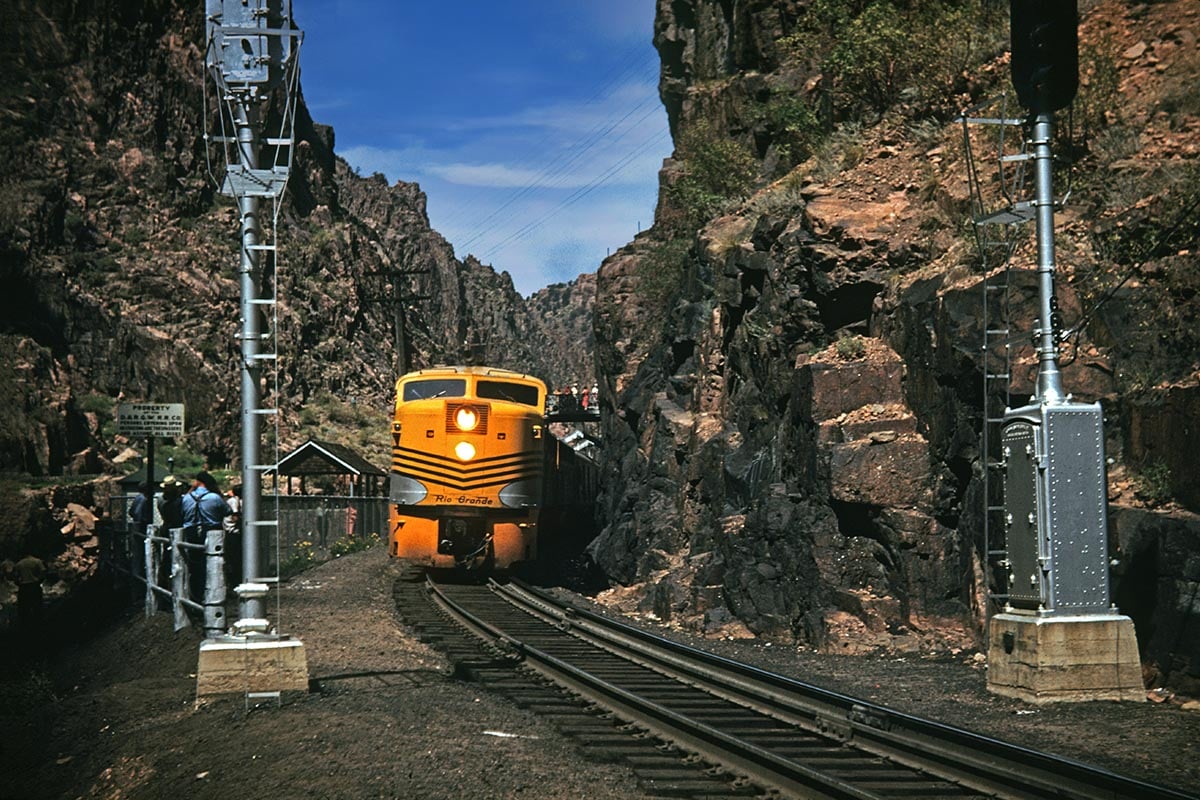
The Alco PA-1’s face is distinctive, as seen in this view of a Rio Grande passenger train stopped at the Hanging Bridge in Colorado’s Royal Gorge. And from this view, once can also see the flaw with Alco’s side-mounted numberboards – the unit number is not visible on the locomotive when viewed from the front, which might have been the reason many railroads opted for the other numberboard option, mounted on the corners of the nose. W. Fleer photograph, Victor Yoder collection
Thanks to Robert Graham, John Hawkins, Gregory Sommers, Clayton C. Tinkham, Robert Tinkham, Paul Tupaczewski
Bibliography:
- The Diesel Builders, Volume 2; American Locomotive Company and Montreal Locomotive Works, by John F. Kirkland, Interurban Press, 1989, OSBN 0-916374-81-5
- PA: ALCo’s Glamour Girl, by Andy Romano, Four Ways West Publications, 1997, ISBN 1-885614-16-0
- PA4 Locomotive, by Norman E. Anderson and C. G. MacDermot, Chatham Publishing, 1978
- Santa Fe Early Diesel Daze 1935-1953, by John B. McCall, Kachina Press, 1980
- The Surfliners; 50 Years of the San Diegan, by Dick Stephenson, Trans-Anglo Books, 1988, ISBN 87046-084-6


